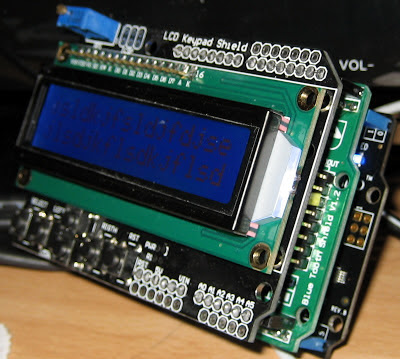Adding cheap LCD display and bluetooth shields to a Netduino

I purchased a cheap LCD keypad shield from DX that makes it simple to add a 16x2 LCD display to an Arduino. The board also includes a set of buttons that are connected to a single analog pin through a resistor ladder network. It's a pretty slick way of minimizing the pin count. The board is designed for 5V. The Netduino is a 3.3v system. The buttons resistor network is wired to the 5V supply so most of the buttons analog values are out of bounds for the 3.3V input. Others have modified the board to use the 3.3v rail or dropped 5V to 3.3V through a resistor. I didn't do any of this because I don't need the buttons. The LCD uses digital pins D4-D9 and can operate with 3.3V signals. The Netduino MF libraries support the on-board devices but not external chips or interfaces. The LCD Controller is a standard HD44780 which is supported by nice netmftoolbox supplemental library. I downloaded the netmftoolbox library from codeplex and un...
